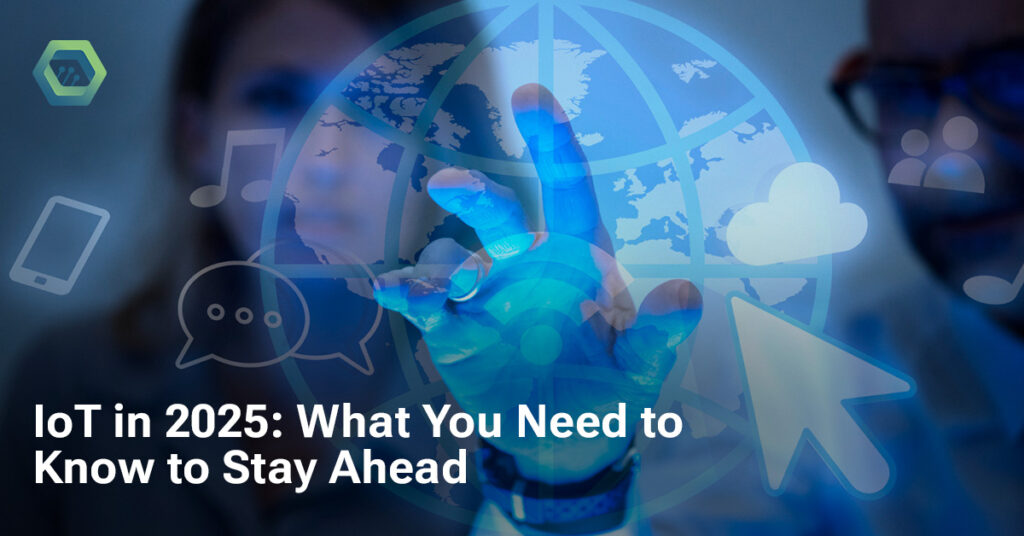The Internet of Things (IoT) continues to grow rapidly, transforming how we interact with devices, data, and the environment. In 2025, IoT is expected to become even more powerful, smarter, and integrated into our daily operations across industries. Whether you’re in manufacturing, healthcare, agriculture, or smart cities, understanding the direction of IoT in 2025 will help your business stay competitive and efficient.
In this blog, we’ll explore the latest trends, innovations, and what businesses must prepare for to fully harness the benefits of IoT in 2025.
1. The Growth of IoT in 2025
The global IoT market is expected to exceed $1.5 trillion by 2025. Businesses are investing in connected devices to increase automation, optimize operations, and gain real-time insights.
This growth is driven by the increasing demand for:
- Remote monitoring
- Smart analytics
- Predictive maintenance
- Automated workflows
More devices are being deployed across factories, cities, hospitals, and homes, all connected via intelligent platforms.
2. AI and Machine Learning Powering Smarter IoT
One of the biggest advances in IoT in 2025 is the tight integration with AI and machine learning. These technologies are enabling systems to:
- Predict failures before they occur
- Adapt in real-time to changing conditions
- Optimize operations without human intervention
Smart cameras, predictive maintenance tools, and adaptive lighting systems are already proving how AI makes IoT more valuable.
3. Edge Computing Becomes Essential
Edge computing is a key trend in IoT in 2025. Instead of sending all data to the cloud, edge devices process information locally and only send relevant data to the cloud.
Benefits of edge computing include:
- Lower latency
- Reduced bandwidth usage
- Enhanced privacy
- Faster decision-making
For industries like healthcare and manufacturing, edge computing enables real-time responses where every second matters.
4. Security Remains a Top Priority
As more devices connect to networks, ensuring the security of IoT in 2025 is a major concern. With billions of endpoints, any vulnerability can be exploited.
Best practices include:
- Regular firmware updates
- Strong authentication protocols
- Encrypted data transfers
- Secure device provisioning
Governments and businesses alike are putting stricter IoT regulations and security frameworks in place to prevent cyber threats.
5. Sustainability and Energy Efficiency
IoT in 2025 is not just about performance—it’s about sustainability. Businesses are using IoT to:
- Monitor energy consumption
- Optimize HVAC and lighting systems
- Reduce waste in production
- Track environmental data like emissions or water usage
These solutions not only reduce costs but also help companies meet their sustainability goals and comply with regulations.
6. Industry-Specific IoT Applications
Each industry is leveraging IoT in different ways in 2025. Here’s how:
Manufacturing
- Real-time machine monitoring
- Predictive maintenance
- Quality control using smart sensors
Healthcare
- Remote patient monitoring
- Smart medical devices
- Automated alerts and diagnostics
Agriculture
- Smart irrigation systems
- Soil moisture sensors
- Livestock tracking devices
Smart Cities
- Traffic and waste management
- Smart lighting and surveillance
- Public safety and emergency response
The flexibility of IoT enables industry-specific solutions that drive better outcomes.
7. The Rise of 5G in IoT
IoT in 2025 is powered by faster connectivity, thanks to 5G networks. The speed and bandwidth improvements from 5G allow:
- More devices to connect simultaneously
- Higher-quality video surveillance
- Real-time analytics without delays
- Advanced autonomous vehicle control
5G is enabling high-performance applications that were previously limited by network capabilities.
8. Interoperability and Standardization
One of the longstanding challenges in IoT is device compatibility. In 2025, there’s a major push toward open standards and better interoperability.
This means:
- Easier integration between devices from different manufacturers
- Less vendor lock-in
- Lower setup and maintenance costs
Protocols like MQTT, LoRaWAN, and Zigbee continue to be essential for building scalable, connected ecosystems.
9. User-Centric Dashboards and Analytics
The importance of intuitive dashboards and analytics tools is growing. In IoT in 2025, businesses demand:
- Simple, visual reports
- Customizable KPIs
- Real-time alerts
These tools help non-technical users make informed decisions without digging into raw data. It’s about empowering teams across departments.
10. How to Prepare Your Business for IoT in 2025
If you’re looking to adopt or expand your IoT strategy in 2025, here’s what you need to do:
- Choose the right IoT platform that supports your protocols and offers device management, analytics, and integrations.
- Focus on scalability so your infrastructure can grow with your needs.
- Invest in training to upskill your team on how to use IoT tools effectively.
- Keep security top-of-mind to protect your data and systems.
- Look for vendor support and long-term partnerships that ensure your success.
Conclusion: Powering Your IoT Journey with OmniWOT
In 2025, IoT offers limitless potential—but only if your business is ready. Whether it’s integrating smart sensors, leveraging real-time analytics, or automating critical processes, the future of IoT is intelligent, secure, and scalable.
OmniWOT helps you take full advantage of this transformation. Our open-source IoT platform supports end-to-end device management, data processing, and visualization—all tailored to your industry needs. With 100+ long-range sensors, smart gateways, and customizable dashboards, we empower businesses to grow smarter and more efficiently.
👉 Ready to stay ahead with IoT in 2025?
Get in touch with OmniWOT today and future-proof your operations with powerful, connected technology.


